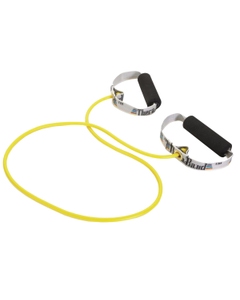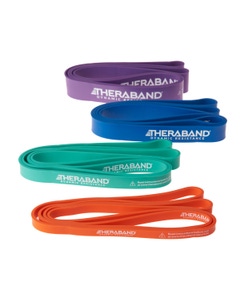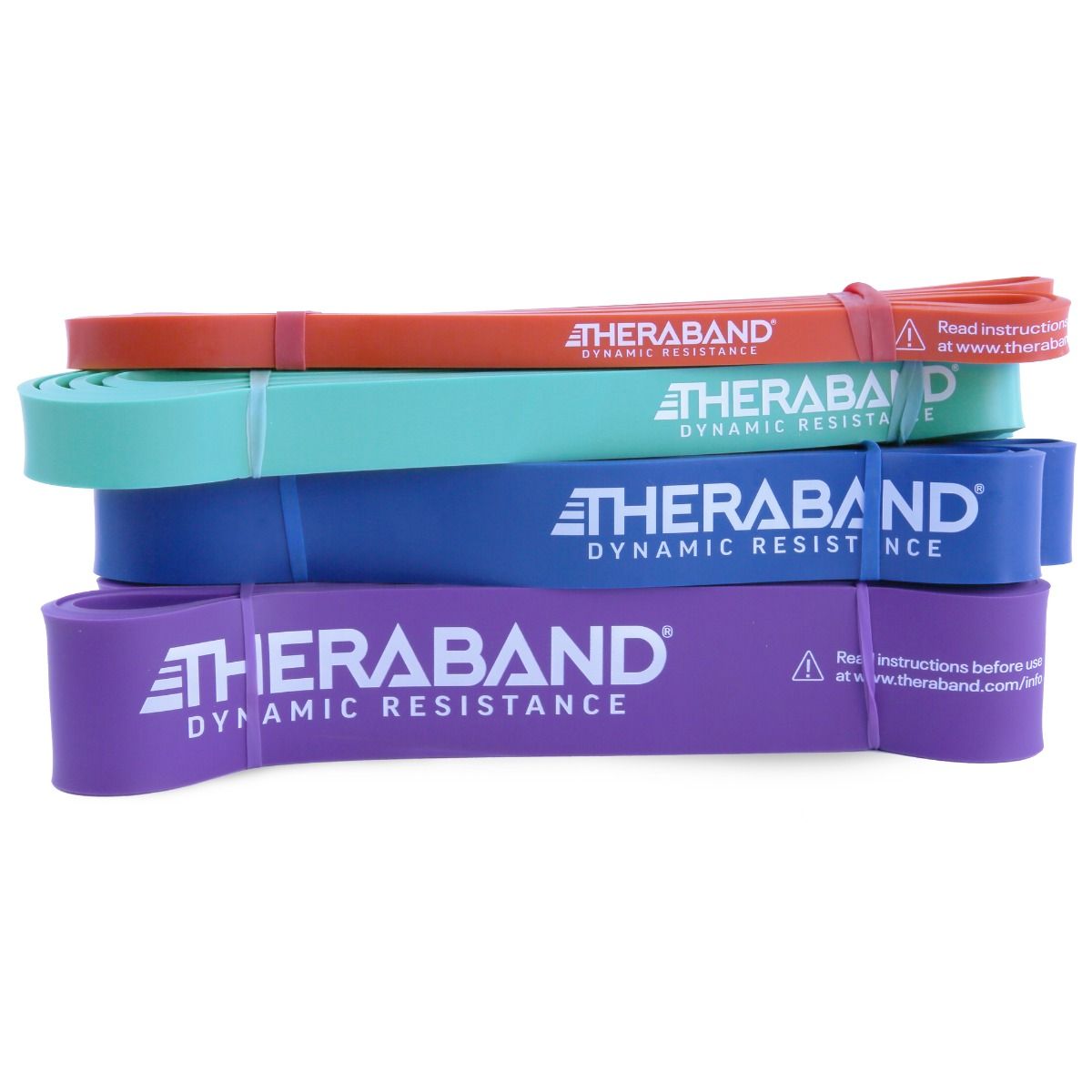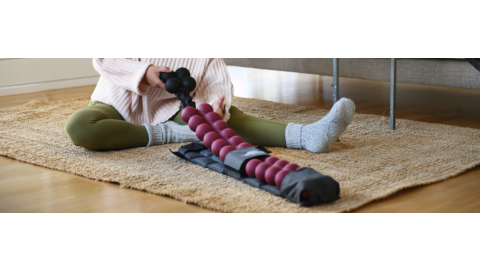Football season is just around the corner and players are getting ready with a workout regimen that includes various types of training: weight, speed, conditioning, agility, and flexibility. Are you ready?
This article will provide you with some helpful tips and resistance based exercises to get you ready for the season!
Key Takeaways
- Resistance training products can be used instead of or in addition to weights.
- Resistance bands can help reduce the risk of training-related injuries.
- Improve strength, speed, and agility with these resistance training exercises.
Top Products in This Article
5 Benefits of Resistance Training
5 Strength Training Exercises with Resistance Tubing
5 Sprint Drill Exercises with High Resistance Bands
Recap
5 Benefits of Resistance Training

Use Instead of or In Addition to Weights
With resistance bands or tubing, you can execute just about any strength training exercise without the need for weights. Weights maintain the same tension as you lift and lower through exercises. The bands, however, create ascending resistance, meaning that as you move further in a range of motion, the band creates more tension for you.
Improves Agility, Speed, and Core Stabilization
Resistance training also helps increase foot agility, speed, and core stabilization. The bands allow for speed and momentum to build-up at the beginning of each repetition before becoming increasingly difficult to continue. With greater resistance at the end of range of motion, the band teaches the body to accelerate force and provides a greater challenge to peripheral stabilization.
Less Compressive Force on the Knee Joint
Resistance bands can help lessen knee joint compressive forces by strength training the surrounding muscles of the knee using a non-compressive training force. The bands use horizontal vector force which creates zero vertical joint compression. As a result, the band becomes a better long-term strategy to lower body functional strength training as it relates to knee joint compression.
Less Compressive Force on the Lower Back
Barbell or dumbbell squats apply a significant amount of joint compression to the lower back. Squatting with a resistance band can help reduce lower back compression at the bottom of a squat where most injuries occur. Attaching bands to a squat bar can also help eliminate the need for high barbell weights.
Reduces Risk of Rotator Cuff Injuries
Barbell or dumbbell bench pressing and overhead pressing becomes challenging to perform with active aging shoulders, specifically the rotator cuff. The pliability of a resistance band allows the pushing and pressing movement patterns to be modified. The ascending resistance of a band also requires less muscle force at the start of the concentric phase of a push or press. These benefits ultimately help reduce the risk of rotator cuff injuries.
5 Strength Training Exercises with Resistance Tubing
- Hip Extension
- Create a loop by passing one handle of the resistance tubing through the other. Loop the resistance tubing around the foot of the leg you are exercising.
- Stand on the tubing with your other foot, while holding the opposite handle. Brace your abdominals and kick your leg backward, keeping your knee straight.
- Hold and slowly return. Keep your back and trunk upright.
- Lateral Squat Walk
- Loop the resistance tubing around your ankles and stand with your feet together, bending slightly at the knees and hips until your thighs are at a 45-degree angle.
- Have your toes pointing straight ahead and step 6-8 inches (15-20 cm) out to your left, keeping your right foot planted.
- Bring your trailing right foot back to the start position and repeat.
- Lateral Raise
- Assume a staggered stance position and stand on the middle of the resistance tubing under your front foot.
- Grasp the handles and lift your arms outward, keeping your elbows straight and thumbs up.
- Stop at shoulder level. Hold and slowly return.
- Tips: Keep your shoulder blades down, back straight, and avoid shrugging your shoulders. For variation, lift the arms completely overhead for full range of motion.
- Squat with Shoulder Press
- Lay the resistance tubing on the floor and step onto the center of it with your feet shoulder-width apart.
- Bend down and grab both ends of the tubing, before standing up straight, pulling it taut, with your arms fully extended.
- Pull the tubing up to your shoulders, palms facing out, elbows tucked in.
- Drop down into a squat position, before driving back up to a standing position, fully extending your arms above your head.
- Bring them back down to your shoulders and repeat.
- Firouts
- Attach resistance tubing two pieces of resistance tubing to two secure attachment points near the ground.
- Loop one tube over each of your shoulders and crawl out to where you begin to feel tension.
- Stay in good position and extend all the way out, squeezing your glutes when you reach full extension.
- The goal is not to jump out, but you will end up doing so to achieve full extension against the resistance of the band.
5 Sprint Drill Exercises with High Resistance Bands
- 10 Yard Acceleration Sprint
- Loop the THERABAND high resistance band around the waist and assume starting sprint position, leaning forward at 45-degree angle.
- Using a partner to stand behind you while holding the resistance band, sprint forward for 10 yards maintaining forward lean. Your partner jogs behind you, holding onto the band to provide steady resistance.
- Back Pedal
- Loop the high resistance band around the waist.
- Bending at the hips and knees, sit back into a quarter-squat.
- Using a partner to stand in front of you while holding the resistance band, take small steps backward continuously.
- Continue for the desired time or distance with your partner holding onto the band to provide steady resistance.
- Broad Jump
- Loop the high resistance band around the waist.
- Bending at the hips and knees, sit back into a quarter-squat.
- Quickly swing arms forward and simultaneously explode with legs to jump forward as far as possible.
- Land with a stable base and absorb impact by allowing the body to return to start position.
- Multi-Directional Sprint and Touch
- Loop the high resistance band around the waist and assume starting sprint position, leaning forward at 45-degree angle.
- Add a cone touch 5-7 feet (1-2 meters) in front of you to force multi-level adjustments during the sprint.
- Using a partner to stand behind you while holding the resistance band, sprint forward to touch the cone and pedal back to get into starting position.
- Multi-Directional Jump
- Loop the high resistance band around the waist and bend at the hips and knees, then sit back into a quarter-squat.
- Add a cone touch 5-7 feet (1-2 meters) on the left and right side of you to force multi-level adjustments during the jump.
- Use a partner to stand behind you while holding the resistance band.
- Quickly swing your arms forward and simultaneously explode with your legs to jump forward to touch the cone on the left.
- Pedal back, assume the starting position, and then time jump forward to touch the cone on the right.

Recap
If you’re familiarized with weight training, the transition to resistance bands can be a challenge if you’re not sure what to do with them. The strength training and sprint exercises provided in this article are great examples of how to use resistance bands to improve strength, speed, and conditioning.
Follow these exercises and get your athletes prepared for game nights in no time! If you found this guide helpful, don’t forget to share it with your friends to help them prepare their athletes for their first day of the off-season!
References
- Anonymous. (2019). How to Transition from Weights to Resistance Bands. TB12 Sports. Retrieved from https://tb12sports.com/blog/resistance-band-training-tips
- Lazarri, Zach. (2019). Are Resistance Bands Better than Weights? Livestrong. Retrieved from https://www.livestrong.com/article/379676-are-resistance-bands-better-than-weights/
- Schmitz, Dave. (2017). 9 Reasons Why Aging High Profile NFL Athletes Choose RBT. Resistance Band Training. Retrieved from https://resistancebandtraining.com/9-reasons-aging-nfl-athletes-choose-rbt/
Medical Disclaimer: The information provided on this site, including text, graphics, images, and other material are for informational purposes only and are not intended to substitute for professional medical advice, diagnosis, or treatment. Always seek the advice of your physician or other healthcare professional with any questions or concerns you may have regarding your condition.







 US
US France
France Australia
Australia











